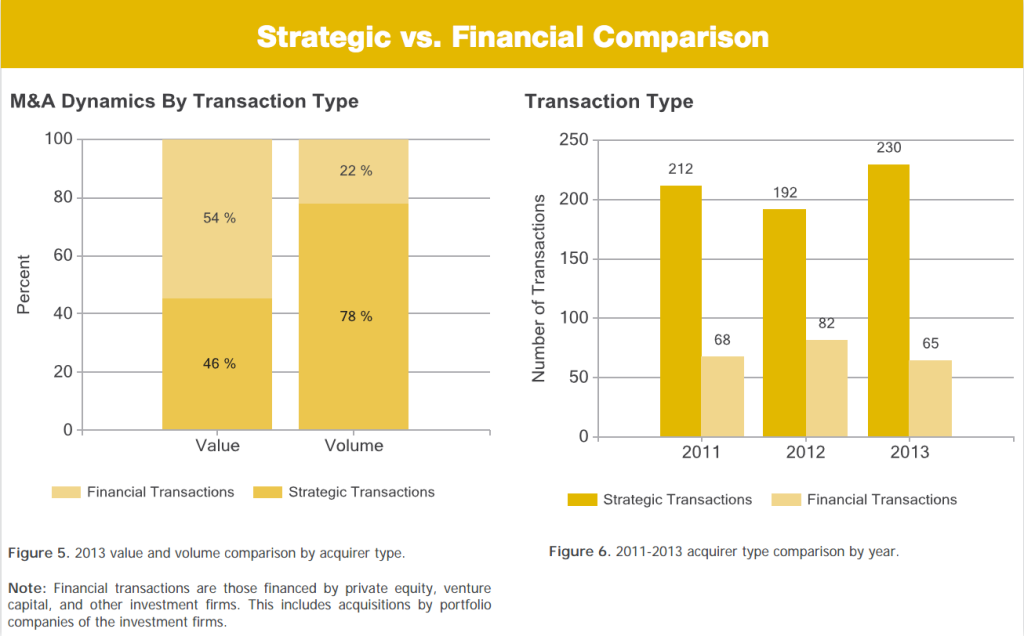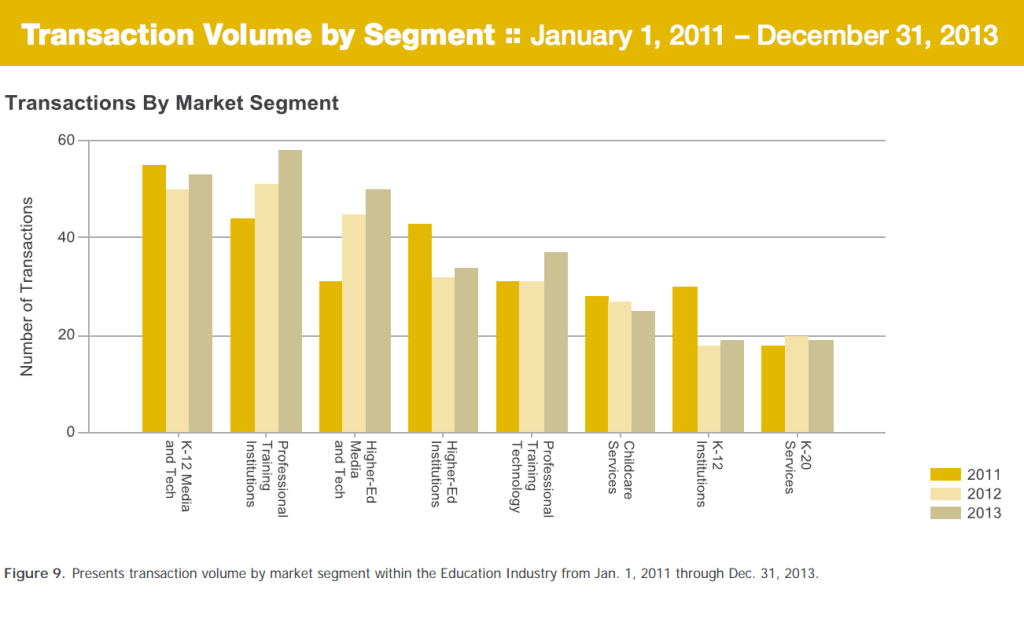Like it or not, education is an industry, and much of the change we see affecting higher ed and K-12 institutions is driven by investment from the private sector. It can be useful to get a high-level view of the trends in private investments to help understand where private companies (edtech vendors, publishers, for-profit institutions, etc) are likely to move in the future.
According to a new year-end report from Berkerey Noyes, a US-based investment banker, merger and acquisition activity in the education industry continued to grow in 2013, with the 9 of the 10 largest deals occurring outside of the US. As summarized at Education Week:
A number of recent reports have shown or predicted a strong and growing demand for various educational products and services in markets such as Latin America, and the new, year-end report on transactions published by Berkery Noyes would seem to reinforce that portrait.
“The big education players are acquiring to help manage the transition from print to digital,” Peter Yoon, managing director of Berkery Noyes’ education group, said in an interview. He said they’re also moving to “strengthen their presence in emerging markets.”
The most active acquirer was Pearson PLC, with six deals that included the “acquisition of Grupo Multi Holding, an English language training company headquartered in Brazil, for $829 million”.
In total there were 295 transactions for a total of $10.2 billion in value, which represented year-over-year growth of 8 and 27% respectively.
Beyond the international growth, there are two other items that jumped out at me – the shift towards strategic buyers and the strong growth in professional training.
Shift to more strategic buyers
Financial buyers are those where the acquiring company is financed by “private equity, venture capital or other investment firms”, whereas strategic buyers are those where one company in a related market buys another company for strategic reasons. I see three factors that could help explain this shift:
- As mentioned above, many companies are making the difficult transition from traditional educational models to digital, personalized models and need to buy specialized smaller companies to help make this transition (e.g. Pearson buying Learning Catalytics or Desire2Learn buying Knowillage);
- In a similar vein, many companies are making expanding their international market presence and need to acquire companies already in the target region (e.g. DeVry buying Faculdade Diferencial Integral in Brazil); and
- There are companies which initially raised money in 2010 – 11 but have gone through their initial funding and do not have a clear path to become a sustainable company, and these companies are easy targets for acquisition (e.g. Noodle buying Lore).
Not that in all three cases above, the acquired company is specifically targeted because it is relatively small. The net effect is that there are far fewer financial buyers in 2013 than there were in 2012, but the actual value of financial transaction is still quite large – financial buyers seem to be more interested in companies that have proven their value and already have scale (you need to put your money somewhere, and financial buyers are taking less risk).
Strongest segment is professional training
The other item of note seems to track some of the same discussions on the future of MOOCs – there is real interest in focusing on professional training and that is where much of the money is going. Udacity (Open Education Alliance) and Coursera (Specializations) have already made significant announcements about increasing their focus on professional training and development, and this trend also holds for mergers and acquisitions. There is a growing need for training and education for people looking for jobs or looking to advance their careers, and companies themselves see the development of their workforce as an increasingly important part of their strategies.
Higher Ed Media and Tech is another segment that is growing, although not as fast from 2012 to 2013 as it was the year prior.
Beyond the report, which is really a teaser for Berkerey Noyes investment banking services, there is also a database of specific transactions at their MandAsoft site. I find that the free reports and limited database access are both quite useful – read the whole report.
And a note to Mark Drechsler, I did research this company (BNC) and the data in their reports – this one seems solid. But I look forward with trepidation for your comments.


